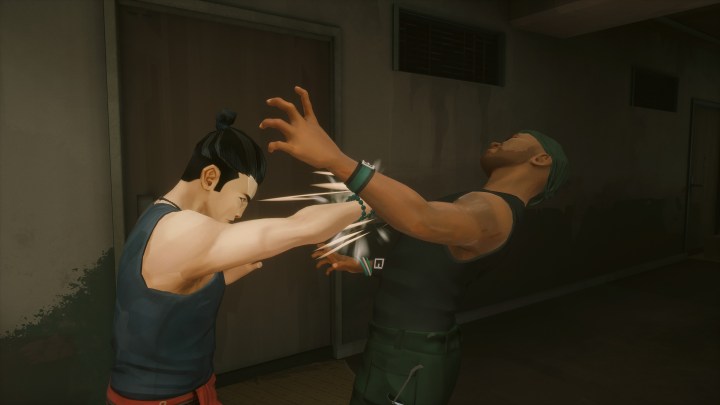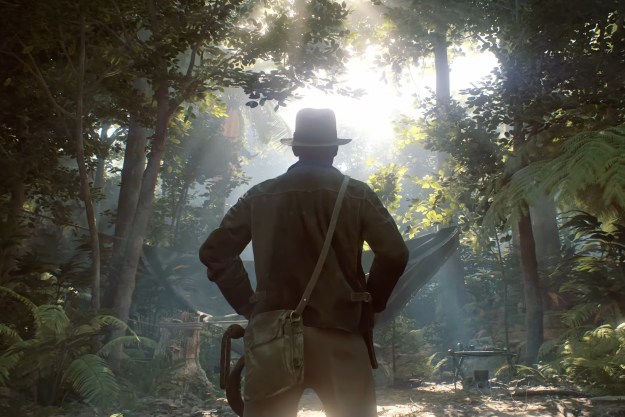Sifu is a fairly difficult game with a simple premise: A martial artist sets out on a quest for revenge. Using the kung fu they’ve learned over the course of eight years, the hero must defeat five bosses all within the span of one life. They don’t die outright after getting beaten up, but become a bit older every time instead.
This leads to the game’s central question: “Is one life enough to master kung fu?” For what it’s worth, I’ve beaten the game and, yes, it is. But developer Sloclap doesn’t have a lifetime for players to know kung fu. I beat the game over the course of 30 hours, but was hooked immediately. From the game’s start, I felt that I knew it. That’s thanks to how easy it is to see the character’s movements and to watch them hone their martial arts skills.
In an interview with Digital Trends, Sloclap executive director Pierre Tarno and animation director Kevin Roger described the work that went into bringing Sifu‘s kung fu to life and how they made sure players would understand it.
Not for show or sport
Sifu stands out from a lot of other media that uses kung fu to market itself. The name brings back memories of old, American kung fu movies, full of cheesy special effects and bad dubbing. Those movies were loud, with actors exclaiming “hi-yah” or some other unrealistic stereotype every time they attacked. Bad guys would grunt and heave with “oofs” and “aghs” every time they were hit before being left on the ground, groaning.
While Sifu also partially markets itself as the video game version of a kung fu flick, its depiction of a martial artist in action is more akin to what I’ve seen in a dojo (I earned my black belt in Shotokan karate years ago). That’s thanks to two decisions on the part of Sloclap.
First was the choice to have Sifu‘s main character practice pak mei, a specific form of kung fu that Tarno describes as “a style that focuses on speed, explosivity, and precision.”
“When you think kung fu, you think Crouching Tiger, Hidden Dragon,” Tarno tells Digital Trends. “It’s super flowy and quite exuberant. This is a specific style that is very rounded; it’s not a show or sport. It’s something you do on the battlefield.”

Attacks from Sifu‘s main character perfectly exemplify that through the course of the game. Their moves are about utility, not flair. Quick, close strikes characterize a majority of their attacks, their feet never leaving the ground unless it’s to kick, and even then, they never jump. Every movement is practical, but not boring. These are furious flurries of swipes, strikes, and punches, and they reflect the main character’s inner workings.
“We wanted the moves of the main character to reflect who he is,” said Tarno. “It’s a revenge story, We wanted that anger and rage to come through in his movements.”
What results is a realistic depiction of a martial artist in action. Sifu‘s main character can strategically take a group of enemies apart and without the sounds of a cheesy kung fu movie. “Realism is inherent to the style itself,” said Tarno. “We then built everything around it, including sound design, to make it feel grounded, realistic, or at least credible.”
Slowed down
For anyone who has seen a martial artist at work, Sifu‘s main character doesn’t completely look like one in action. Not because the charcter doesn’t sport the same cartoonish art style as the rest of the game, but because they simply aren’t moving fast enough.
“Pak mei is very fast,” Roger tells Digital Trends. “When you see Benjamin [a pak mei master brought on to assist with development] perform a move, it’s like, he does nine strikes in less than one second. You can’t see all of them. And because we’re not capable of seeing things that fast, my main challenge was to be readable and keep the authenticity.”
“Realism is inherent to the style itself.”
It’s not like Sifu is a slow game, either. While not blistering fast, the game’s main character can dole out moves quickly. In a flurry of hits, players can strike an opponent in their chest and neck three times before delivering an elbow to their head, knocking them face down on the ground. These attacks take some time to become recognizable, starting as a blur but slowly turning into a legible sequence of movements.
In reality, the only reason why these attacks are perceptible is that a majority of them use animated keyframes.
Keyframes are essentially pictures of how an animation should start, stop, and hit all the major points in between. A classic example of this would be to picture a ball bouncing. The first keyframe would show the ball dropping, the second would be it hitting the ground, and the last would show it at the top of its next arc.

For Sifu‘s animation team, keyframes helped ensure that when they were brought into the game, these attacks didn’t interrupt the gameplay or style. “Benjamin showed us a lot of Pak Mei techniques, we chose the ones we liked the most,” said Roger. “Because we chose one movement, though, we had to chain them with others. We started with one and continued to run through others. At the end, we had, I don’t know, maybe 200 movements with video references. We keyframed those movements, didn’t motion capture them.”
Of course, motion capture did come into play for one key part of Sifu: Its takedowns. When stunned, enemies are left vulnerable to a ruthless takedown attack, some of which use the surrounding area. The main character will block a kick, hold the attacker’s leg, and kick the other leg at the knee, for instance.
“We did use motion capture for very small parts of the game,” Roger continued, “the takedowns and finishers, because they’re more complicated movements with synchronized action and lots of contact. We made it to fit in the direction I put with the main character.”
However, it still seems that keyframing is why Sifu flows the way it does. “You can’t just [motion capture] animation and put it into the game,” Tarno explained, “because you’ve got so many gameplay constraints. There’s all these things about timing. We’d want a fast attack here, a slower one there, a powerful attack here. It’s a back-and-forth process, which is why we use keyframes, so we can stay within the style, keep the essence of the movements, while still having a cohesive gameplay experience.”
Sifu is available now on PC via the Epic Games Store, PS4, and PS5.
Editors' Recommendations
- Sifu developer explains why the game’s latest update is its last
- Sifu’s kung fu fighting has already swept me off my feet
- Kung-Fu fighting title Sifu gets 2022 release date and new trailer



